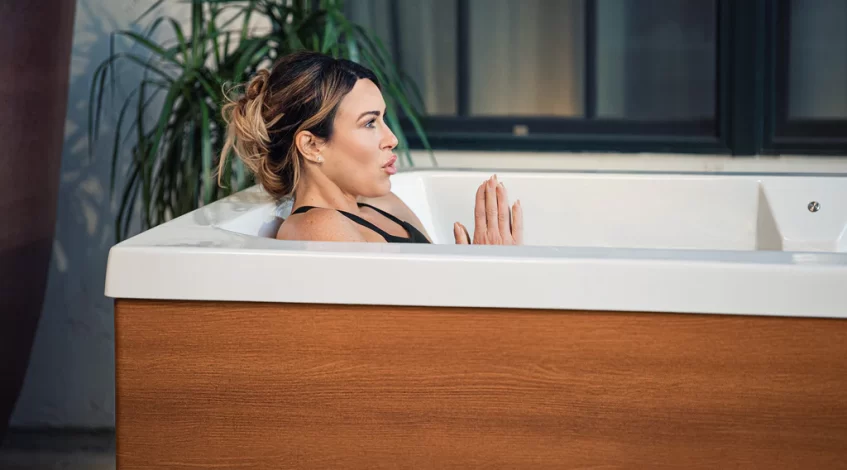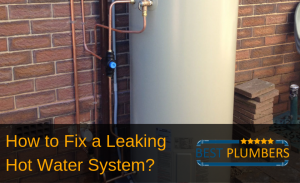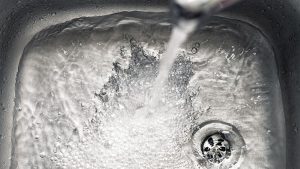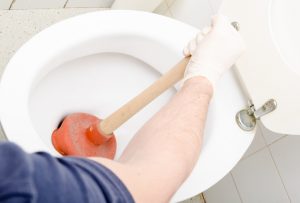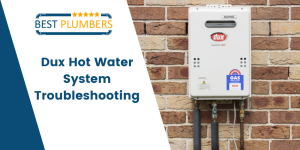Thinking about adding a cold plunge to your wellness routine? You’re not alone. Cold plunges have become a must-have for anyone keen on recovery and boosting overall health. But before you take the icy leap, you’ll need to understand the plumbing that makes it all possible.
Getting your cold plunge plumbing right means more than just filling a tub with water. The right setup ensures clean, chilled water every time you use it and keeps maintenance simple. Whether you’re planning a DIY project or hiring a plumber knowing the basics will help you make smart choices and avoid costly mistakes.
What is cold plunge plumbing?
Cold plunge plumbing refers to the system responsible for circulating, filtering and chilling water in a dedicated cold plunge tub. This setup uses insulated pipes, filtration units and chiller connections to keep water at targeted low temperatures, usually between 4°C and 12°C. Pipework made from PVC or stainless steel helps maintain water purity and prevent thermal loss. Filtration components, like cartridge or sand filters, remove debris and contaminants to support hygiene. Chiller units or coils lower the water temperature and sustain it within the selected range. Valves, drains and flow controllers regulate water movement, emptying and refilling processes. Reliable plumbing prevents stagnation and simplifies cleaning or chemical dosing if you maintain a residential, commercial or therapeutic cold plunge system.
Key components of a cold plunge plumbing system
Cold plunge plumbing relies on several core elements to maintain consistent low temperatures and clean water. Each component plays a distinct role in ensuring efficient operation and user safety.
Chillers and cooling units
Chillers and cooling units are central for water temperature control in cold plunge systems. These machines, including air- or water-cooled chiller models, lower water temperatures to between 4°C and 12°C which enables optimal cold therapy. Commercial systems often employ high-capacity chillers rated for heavy usage, whereas domestic setups might use compact air-source units. Integrated temperature controllers allow precise settings for different users or protocols.
Insulation and pipework
Insulation and pipework sustain temperature stability and water purity in cold plunge setups. Pipework, often using PVC or stainless steel, resists corrosion and blocks contaminants from entering the water. Insulation, typically foam jackets or lagging around pipes and tubes, reduces heat ingress and minimises system load on chillers. Secure fittings and thermal breaks prevent energy waste and leaks, especially for installations exposed to ambient temperature variations.
Filtration systems
Filtration systems maintain water clarity and hygiene in cold plunge plumbing. Cartridge and sand filters remove debris, oils, and biological contaminants from circulating water. Inline UV sterilisers or ozone generators are sometimes used in high-traffic installations for advanced disinfection. Regularly cleaned and maintained filters extend equipment life and keep water safe for repeated use.
Installation options for cold plunge plumbing
You access several installation routes for cold plunge plumbing based on your skills, available space, and intended location. Choosing the right approach influences efficiency, cost, and long-term maintenance.
DIY vs professional installation
You complete a DIY cold plunge installation using off-the-shelf kits or self-sourced components. Typical DIYers use PVC or flexible hoses, basic pump-filter combos, and plug-in chillers. DIY setups appeal if you’re cost-conscious or have plumbing experience, yet these systems sometimes lack advanced filtration or precise thermal control (Trusted Source: UK Building Regulations).
You achieve more robust plumbing, seamless chiller integration, and certified water handling by opting for professional installation. Experts ensure correct pipe insulation, compliant drainage, and safety features, especially for commercial or shared environments. Professionals also help with planning consent or electrical safety checks when local authority approval is required.
Indoor vs outdoor setups
You place indoor cold plunge systems where insulation, flooring protection, and ventilation are priorities. Interior installations reduce temperature variability and simplify chiller performance. Typical placements use reinforced drainage, waterproofed surfaces, and proximity to existing utilities for easier connection.
You select outdoor cold plunge setups to harness space, privacy, or access to gardens and wellness areas. Outdoor installations rely on weatherproof pipework, frost-resistant insulation, and secure covers to defend against debris or temperature swings. Water lines often need frost protection, and you run electricity within approved safety zones for pumps and chillers. Outdoor locations frequently use custom-built enclosures for improved system durability and aesthetics.
Maintenance and troubleshooting tips
Perform routine maintenance on your cold plunge plumbing to help preserve water quality, boost equipment lifespan and maintain peak performance.
Key Maintenance Tasks
- Water Testing and Treatment: Test water at least weekly with pool test strips to monitor pH, chlorine, and microbial load. Adjust levels or use sanitising solutions if readings fall outside safe ranges.
- Filter Cleaning or Replacement: Clean or replace cartridge and sand filters every month or as indicated by reduced water flow. Clogged filters, such as those retaining organic debris, encourage bacterial growth and stress chiller systems.
- Chiller and Pump Inspection: Check chiller coils and pumps for ice build-up or leaks every 30 days. Remove scale with a descaler and address abnormal noise or temperature fluctuation immediately to prevent breakdowns.
- Pipe and Fitting Check: Inspect all visible PVC or stainless fittings monthly for drips, condensation or corrosion. Replace damaged pipes or seals at the first sign of failure to prevent leaks and water waste.
- Drainage and Cleaning Cycle: Drain and clean the plunge tub and plumbing system every 2 to 4 weeks, depending on the frequency of use. Use antibacterial cleaners, then rinse thoroughly to prevent residue build-up.
Troubleshooting common issues
| Symptom | Possible Cause | Solution |
| Low Water Flow | Clogged filter or pump impeller | Clean or replace filter, check and clear impeller |
| Inconsistent Water Temperature | Chiller malfunction or poor insulation | Inspect chiller wiring and coolant, reinforce pipe insulation |
| Cloudy or Smelly Water | Inadequate filtration or sanitiser imbalance | Test and balance water, replace or upgrade filtration |
| Leaks in Pipework | Loose or cracked fittings | Tighten connections, replace faulty components |
| Excessive Energy Consumption | Chiller running continuously or poor insulation | Service chiller, improve insulation on pipes and tanks |
Monitor your plumbing setup for signs of wear, such as damp patches, odd odours, or declining cooling efficiency. Service any system with persistent issues using manufacturer guidelines, or consult a professional plumber for advanced repairs. Regular upkeep of your cold plunge system preserves both functionality and user safety.
Pros and cons of cold plunge plumbing
Pros of cold plunge plumbing
Enhanced water quality
Plumbing systems with integrated filtration and dedicated pipework maintain clear water in cold plunge tubs, especially when paired with cartridge or sand filters.
Consistent cooling
Systems with chillers and insulated pipes keep water temperatures stable between 4°C and 12°C, allowing precise, repeatable immersion conditions for recovery and wellness routines.
Customisation options
Flexible installation methods let you tailor setups for residential or commercial spaces, using materials like PVC or stainless steel to match hygiene and durability needs.
Improved hygiene
Integrated drains, dosing ports, and reliable flow controllers simplify water changes, regular cleaning, and chemical dosing, minimising bacteria and debris.
Optimised energy efficiency
Insulated plumbing and efficient chillers limit thermal loss and reduce ongoing energy expenses in both commercial and home settings.
Cons of cold plunge plumbing
Upfront cost
Initial investment in high-quality chillers, filters, and specialist insulated pipework exceeds costs for basic portable or fill-and-drain solutions.
Complex installation
Installing cold plunge plumbing involves skilled labour, particularly for concealed pipework, drainage provisions, and outdoor weatherproofing.
Maintenance demand
Maintaining optimal performance requires routine water testing, filtration replacement, and system checks, with minimal downtime for repairs or cleaning.
Potential repairs
Pipework leaks, chiller faults, and controller malfunctions can disrupt usage, particularly if unnoticed or left unrepaired over time.
Space and utility requirements
Systems with powerful chillers, filtration tanks, and drainage provisions demand more space and access to water, electricity, and reliable drainage than standard bathtubs.
Conclusion
Choosing the right cold plunge plumbing setup lets you enjoy all the benefits of cold water therapy without unnecessary hassle. With the right planning and components you can ensure a system that’s efficient, easy to maintain and built to last.
Whether you’re upgrading an existing space or starting from scratch a well-designed plumbing solution makes all the difference. Take the time to assess your needs and don’t hesitate to seek expert advice for a reliable and rewarding cold plunge experience.
Frequently Asked Questions
What is cold plunge plumbing?
Cold plunge plumbing refers to the system of pipes, filters, and chillers that circulates, cools, and maintains clean water in a cold plunge tub. It ensures water stays at low temperatures (4°C–12°C) and supports hygiene through effective filtration.
Why is proper plumbing important for a cold plunge?
Proper plumbing ensures cold, clean water, prevents water stagnation, and makes maintenance easier. It also minimises the risk of leaks, contamination, and costly repairs, guaranteeing a safe and efficient cold plunge experience.
What are the key components of a cold plunge plumbing system?
The main components include chillers or cooling units, insulated pipework, filtration systems (like cartridge or sand filters), valves, drains, and flow controllers. Each part helps maintain water temperature, cleanliness, and supports easy maintenance.
Can I install cold plunge plumbing myself?
DIY installation is possible with basic plumbing skills and a suitable kit. However, professional installation is recommended for complex, larger, or commercial setups to ensure safety, durability, and compliance with regulations.
How do I maintain a cold plunge plumbing system?
Regular maintenance involves testing and treating water, cleaning or replacing filters, checking for leaks, inspecting chillers and pumps, and draining and cleaning the tub periodically. Proper upkeep ensures sanitary, efficient, and long-lasting operation.
What common problems can occur with cold plunge plumbing?
Issues can include low water flow, inconsistent temperatures, cloudy or foul-smelling water, leaks in pipework, and high energy consumption. Frequent causes are blockages, faulty filters, damaged components, or incorrect temperature settings.
What are the pros of a dedicated cold plunge plumbing system?
The main advantages are steady water quality, consistent cooling, customisation for different spaces, better hygiene, simplified maintenance, and improved energy efficiency compared to simple water tubs without advanced plumbing.
What are the drawbacks of investing in cold plunge plumbing?
Drawbacks include initial equipment costs, complexity of installation, regular maintenance needs, potential repairs, and the requirement for adequate space and utility connections. Planning can help minimise these challenges.

